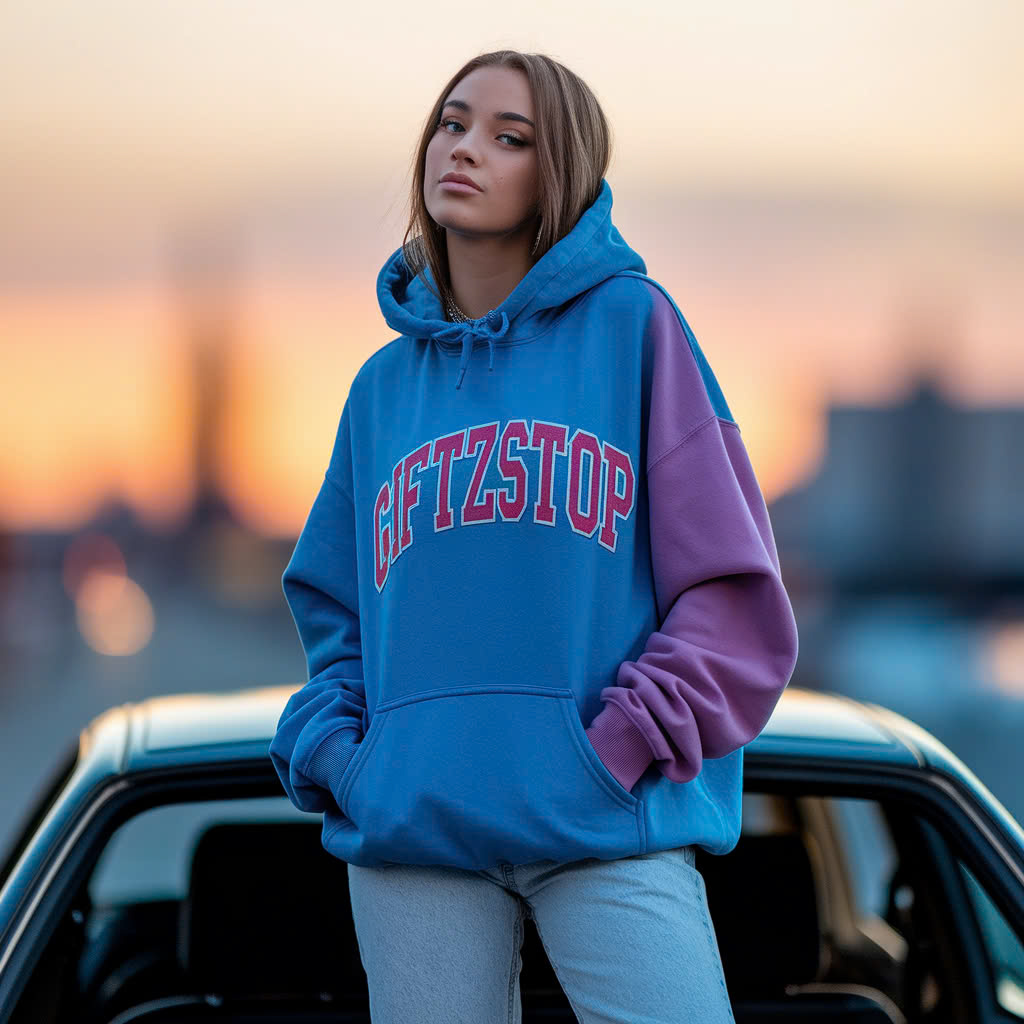▎🎰 Welcome to the world of gambling with Betocas! 🎲
Want to test your luck and win real money? Join us at Betocas.com and get FREE $10 upon registration! Just use the promo code freebet10
The hoodie has grown far beyond its humble beginnings as a simple workwear garment, transforming into a multifaceted symbol of style, innovation, and social expression. Today, hoodies represent more than just comfort—they embody the spirit of urban life, the pulse of cultural change, and the promise of technological evolution. This article explores the journey of the hoodie from its practical origins to its current status as a global wardrobe essential, examining its design innovations, cultural impact, ethical challenges, and future prospects.
The Roots of the Hoodie: Practical Beginnings
The hoodie’s story began in the early 20th century, emerging as a practical solution for those who braved harsh environments. Originally designed as protective workwear for laborers, the hood was added to provide extra warmth and shield the wearer from wind and rain. Made from heavy cotton and durable fabrics, early hoodies were prized for their functionality. They were particularly useful in industrial settings and outdoor activities, where protection against the elements was paramount.
During wartime, the utility of the hoodie was further recognized. Soldiers and pilots alike found that a hooded garment offered an additional layer of insulation during cold nights and in adverse weather conditions. This practical design ensured that the hoodie would remain relevant long after its initial use in labor-intensive environments.
Cultural Adoption and the Rise of Street Style
By the latter half of the 20th century, the hoodie began to transcend its utilitarian roots. As urban centers flourished and youth cultures emerged, the hoodie was adopted as a symbol of rebellion and nonconformity. In the 1970s and 1980s, it became a staple among skateboarders, rappers, and graffiti artists, communities that valued anonymity and a casual, unpretentious style. The hood provided not only physical comfort but also a sense of mystique and protection—a perfect match for the edgy, defiant spirit of urban street culture.
Media and music played crucial roles in cementing the hoodie’s status as an icon. Films and music videos began showcasing hoodies as a symbol of youthful independence, while influential artists and athletes wore them both on and off the field. This widespread visibility helped transform the hoodie into a cultural phenomenon, one that resonated with people from all walks of life.
Design and Innovation: Merging Functionality with Aesthetics
The evolution of hoodie design has been marked by a delicate balance between functionality and aesthetics. While the original focus was on durability and practicality, modern hoodies are designed with both comfort and style in mind. Designers have experimented with various cuts, lengths, and fabric blends to create hoodies that not only protect against the cold but also make a fashion statement.
Innovations such as adjustable drawstrings, kangaroo pockets, and zippered fronts have enhanced the utility of the garment, making it adaptable to a wide range of activities—from athletic pursuits to casual outings. The introduction of lightweight materials and performance fabrics has further expanded the hoodie’s versatility. Today, consumers can choose from an array of options: from sleek, minimalist designs perfect for layering in a metropolitan setting, to bold, graphic-laden pieces that shout individuality and creativity.
Advanced printing techniques have also transformed the hoodie into a canvas for artistic expression. Digital and screen printing allow for intricate designs, vibrant colors, and personalized graphics that give each hoodie a unique identity. This fusion of art and apparel has opened up new opportunities for collaboration between designers, musicians, and visual artists, resulting in limited-edition releases and custom pieces that capture the zeitgeist of the moment.
Technology and the Future of Hoodies
As we move further into the digital age, the integration of technology with fashion is redefining what we expect from our everyday garments. The hoodie, with its blend of comfort and versatility, is well-positioned to embrace these advancements. Emerging trends in wearable technology suggest that future hoodies might do more than just keep us warm—they could actively contribute to our overall wellbeing.
Imagine a hoodie embedded with sensors that monitor your heart rate, body temperature, or even stress levels. Such “smart” hoodies could provide real-time data, alerting wearers to changes in their health or the environment. In addition, fabrics infused with conductive fibers may allow for integrated charging solutions for mobile devices, or even the ability to control connected home devices through embedded touch controls. Although these features are in the early stages of development, they illustrate the exciting potential of merging wearable technology with classic apparel.
Virtual reality (VR) and augmented reality (AR) are also beginning to influence how we shop for and experience fashion. Some forward-thinking brands are experimenting with virtual try-on technologies, enabling customers to see how a hoodie will look on them without stepping into a physical store. This digital transformation not only enhances consumer experience but also paves the way for a more personalized and interactive approach to fashion retail.
Sustainability and Ethical Fashion
With growing concerns about environmental degradation and ethical labor practices, the fashion industry is undergoing a critical transformation. The mass production of hoodies, like many garments, has traditionally relied on practices that are neither environmentally friendly nor ethically sound. However, a new wave of sustainable fashion is challenging this status quo.
Eco-conscious brands are turning to organic cotton, recycled polyester, and innovative sustainable materials that reduce water and energy consumption during production. Waterless dyeing techniques, for example, have emerged as a promising solution to cut down on one of the most resource-intensive aspects of garment manufacturing. By embracing these new methods, companies can significantly reduce the ecological footprint of their products while maintaining high standards of quality and comfort.
In parallel, ethical labor practices are becoming a central focus for consumers and brands alike. Transparency in supply chains, fair wages, and safe working conditions are now considered essential criteria for modern apparel. Certifications such as Fair Trade and Global Organic Textile Standard (GOTS) are helping to build consumer trust by ensuring that the hoodies they purchase are produced responsibly. As awareness increases, more brands are likely to adopt these practices, driving the industry toward a more sustainable and equitable future.
Global Market Trends and Economic Impact
The hoodie has established itself as a mainstay in the global fashion market. Its universal appeal spans generations, cultures, and socioeconomic classes, making it a highly lucrative product for brands around the world. From high-end designer collections to affordable fast-fashion lines, hoodies are produced and sold at a staggering scale.
This economic impact is fueled by the garment’s versatility. Hoodies are not only popular as casual wear—they have also found a niche in sportswear, outdoor apparel, and even high fashion. The global supply chain for hoodie production is vast, with manufacturing hubs located in Asia, Eastern Europe, and Latin America. This network of production enables brands to offer a wide variety of styles and price points, catering to diverse consumer needs.
Marketing strategies also play a significant role in the hoodie’s success. Collaborations between major brands and influential celebrities or artists have created buzzworthy, limited-edition releases that drive consumer demand. Social media platforms are particularly effective in showcasing these collaborations, as influencers share their unique styling tips and unbox new hoodie designs, further amplifying their appeal. In this dynamic environment, the hoodie is not merely a piece of clothing—it is a powerful tool for brand storytelling and consumer engagement.
The Hoodie as a Personal and Political Statement
Beyond its aesthetic and functional merits, the hoodie has become a potent symbol of personal identity and political expression. For many, wearing a hoodie is an act of self-definition—a way to signal membership in a particular subculture or to express dissent against societal norms. The garment’s inherent versatility means that it can be styled in countless ways, each variation reflecting the personality and values of the wearer.
Historically, hoodies have been used as a medium for political messages. During times of social unrest or protest, hoodies have been emblazoned with slogans and graphics that advocate for change, making them a visible and accessible form of activism. This association with social movements reinforces the hoodie’s image as more than just casual attire—it is a statement of solidarity, a call for justice, and a reflection of contemporary struggles.
At the individual level, the hoodie offers both comfort and anonymity. The ability to pull up the hood creates a physical space that can feel protective and private, a feature that many find comforting in a fast-paced and often intrusive world. This duality—the external expression of rebellion combined with an internal sense of security—ensures that the hoodie will continue to hold a special place in the hearts of many.
Innovative Collaborations and Artistic Expression
The intersection of fashion and art is perhaps nowhere more evident than in the evolution of the hoodie. Designers and artists have long recognized the hoodie as a blank canvas, one that invites experimentation and creative expression. High-profile collaborations between streetwear brands, luxury fashion houses, and independent artists have resulted in collections that push the boundaries of conventional design.
These collaborations often lead to limited-edition pieces that command high prices and generate significant buzz in the fashion world. Custom prints, hand-painted details, and unique fabric combinations turn ordinary hoodies into collectible works of art. In these instances, the hoodie is not just worn—it is displayed, celebrated, and sometimes even auctioned off as a symbol of artistic innovation.
The rise of DIY culture and online communities dedicated to fashion customization has also contributed to the hoodie’s evolution. Platforms like Instagram, TikTok, and Pinterest are filled with creative tutorials and inspiration for transforming a basic hoodie into a personalized masterpiece. Whether it’s through tie-dye, embroidery, or patchwork, individuals are taking control of their style by adding their own creative touches to this versatile garment. This democratization of design empowers consumers to become co-creators, blurring the line between mass-produced fashion and artisanal craftsmanship.
Looking Forward: The Future of the Hoodie
As we peer into the future of fashion, the hoodie stands as a prime example of how an everyday garment can evolve to meet the changing needs of society. Advances in wearable technology, sustainable materials, and digital customization are set to redefine the hoodie in exciting ways. Smart textiles that monitor health, dynamic designs that change with the weather, and fully customizable options available at the click of a button are all on the horizon.
In this brave new world, the hoodie will likely serve as a bridge between tradition and innovation. Its classic design provides a familiar foundation upon which new technologies and design philosophies can be layered. Future iterations of the hoodie may well incorporate elements of virtual and augmented reality, offering interactive experiences that blend the physical and digital realms. As brands continue to experiment and push boundaries, the hoodie’s evolution will undoubtedly mirror the rapid pace of technological and cultural change.
Conclusion
From its inception as a rugged, practical garment to its current status as a symbol of style, activism, and technological promise, the hoodie has undergone a remarkable transformation. It is a garment that has adapted to meet the needs of diverse cultures, climates, and lifestyles, all while retaining its core essence of comfort and individuality. The hoodie today is not only a testament to human ingenuity and creativity but also a mirror reflecting the evolving dynamics of modern society.
In a world where personal expression and social connectivity are more important than ever, the hoodie stands out as a unifying element—a piece of clothing that transcends boundaries and speaks a universal language. Whether worn as a statement of rebellion, a mark of solidarity, or simply as a comfortable everyday staple, the hoodie continues to inspire and connect people around the globe.
As we look toward the future, the potential for innovation in hoodie design is limitless. With the integration of sustainable practices, cutting-edge technology, and artistic expression, the next generation of hoodies promises to be even more versatile, functional, and expressive. In embracing these new possibilities, the hoodie will remain a powerful symbol of the ongoing evolution of fashion—a timeless piece that effortlessly adapts to the ever-changing tapestry of human culture.
Ultimately, the hoodie is more than just a garment. It is a story of transformation—a narrative woven from threads of practicality, rebellion, innovation, and creativity. As we continue to redefine our identity in an increasingly interconnected world, the hoodie will remain at the forefront of our cultural dialogue, embodying the resilience and adaptability that define the modern human spirit.
Want to test your luck and win real money? Join us at Betocas.com and get FREE $10 upon registration! Just use the promo code freebet10

The hoodie has grown far beyond its humble beginnings as a simple workwear garment, transforming into a multifaceted symbol of style, innovation, and social expression.

The hoodie has evolved into more than just a casual garment; it is now a cultural icon that represents comfort, self-expression, and urban style. From

The hoodie has come a long way from its humble beginnings as a practical garment to its current status as a symbol of urban cool,